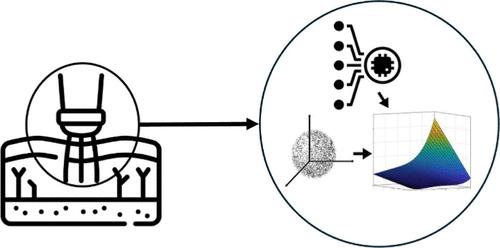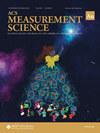优化固体微针设计:综合 ML 增强 DOE 方法
IF 4.6
Q1 CHEMISTRY, ANALYTICAL
引用次数: 0
摘要
微针(MNs),即由微米级针头组成的矩阵,在给药、护肤治疗和健康监测方面有多种应用。微针是皮下注射针的微创替代品,其特点是操作过程快速、无痛,制造方法成本低,并能减少对组织的损伤。本研究探讨了四种 MN 设计,即锥形、锥形锥体、带方形底座的金字塔形和带三角形底座的金字塔形,并根据预定义标准对其进行了优化。工作流程包括三种加载条件:插入时的压缩载荷、临界屈曲载荷以及错误插入导致的弯曲载荷。基座半径/宽度、顶端半径/宽度、高度和锥角顶端等几何参数会影响输出标准,即总变形、临界屈曲载荷、安全系数(FOS)和弯曲应力。在 ANSYS 工作台工具箱中采用实验设计方法的综合框架建立了一个数学模型和响应面拟合模型。由此产生的回归模型、灵敏度图和响应曲线被用于创建一个多目标优化问题,通过整合机器学习 (ML) 技术,帮助实现对所引入的四种形状的 MN 几何设计进行优化。这项研究为通过针头设计实现 MN 的潜在 ML 增强优化框架提供了宝贵的见解,以便在各种生理相关条件下保持耐用性。本文章由计算机程序翻译,如有差异,请以英文原文为准。

Optimizing Solid Microneedle Design: A Comprehensive ML-Augmented DOE Approach
Microneedles (MNs), that is, a matrix of micrometer-scale needles, have diverse applications in drug delivery, skincare therapy, and health monitoring. MNs offer a minimally invasive alternative to hypodermic needles, characterized by rapid and painless procedures, cost-effective fabrication methods, and reduced tissue damage. This study explores four MN designs, cone-shaped, tapered cone-shaped, pyramidal with a square base, and pyramidal with a triangular-shaped base, and their optimization based on predefined criteria. The workflow encompasses three loading conditions: compressive load during insertion, critical buckling load, and bending loading resulting from incorrect insertion. Geometric parameters such as base radius/width, tip radius/width, height, and tapered angle tip influence the output criteria, namely, total deformation, critical buckling loads, factor of safety (FOS), and bending stress. The comprehensive framework employing a design of experiment approach within the ANSYS workbench toolbox establishes a mathematical model and a response surface fitting model. The resulting regression model, sensitivity chart, and response curve are used to create a multiobjective optimization problem that helps achieve an optimized MN geometrical design across the introduced four shapes, integrating machine learning (ML) techniques. This study contributes valuable insights into a potential ML-augmented optimization framework for MNs via needle designs to stay durable for various physiologically relevant conditions.
求助全文
通过发布文献求助,成功后即可免费获取论文全文。
去求助
来源期刊

ACS Measurement Science Au
化学计量学-
CiteScore
5.20
自引率
0.00%
发文量
0
期刊介绍:
ACS Measurement Science Au is an open access journal that publishes experimental computational or theoretical research in all areas of chemical measurement science. Short letters comprehensive articles reviews and perspectives are welcome on topics that report on any phase of analytical operations including sampling measurement and data analysis. This includes:Chemical Reactions and SelectivityChemometrics and Data ProcessingElectrochemistryElemental and Molecular CharacterizationImagingInstrumentationMass SpectrometryMicroscale and Nanoscale systemsOmics (Genomics Proteomics Metabonomics Metabolomics and Bioinformatics)Sensors and Sensing (Biosensors Chemical Sensors Gas Sensors Intracellular Sensors Single-Molecule Sensors Cell Chips Arrays Microfluidic Devices)SeparationsSpectroscopySurface analysisPapers dealing with established methods need to offer a significantly improved original application of the method.
 求助内容:
求助内容: 应助结果提醒方式:
应助结果提醒方式:


